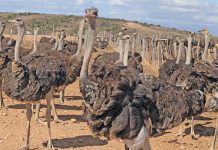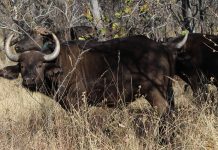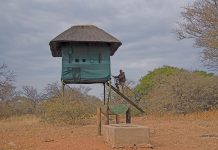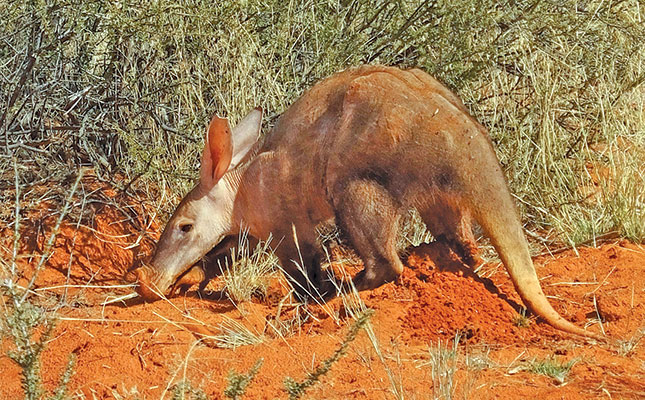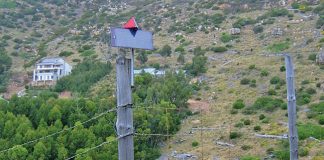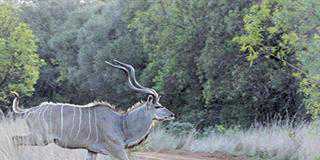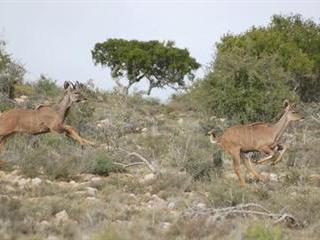
The Eastern Cape’s free-ranging kudus are always a hot topic among farmers, particularly where one neighbour is deemed to over-cull while the other is accused of being overly conservation-conscious. In recent years, another philosophy has taken root, with some landowners arguing that if you don’t shoot them, someone else will – and they’ll die in the next drought, anyway. But now the free-range kudu population has hit a bad patch, taking both farmers and hunters completely by surprise.
For at least two decades, kudu numbers have been growing steadily and the antelope have spread along watercourses and mountain ranges as far west as Montague. Yet after only the first week of this year’s hunting season, farmers had noticed a sharp drop in herd size and a drastic change in herd composition.
Possible reasons include a series of dry winters, a drought broken by abnormally high rainfall, abortions and mortalities caused by Rift Valley fever (RVF), excessive hunting pressure, and an increase in black-backed jackal and caracal. While climatic conditions and diseases must have played a role, open farms seem to be harder hit than game-fenced ranches, although nature reserves have also suffered losses.
However, the part played by overhunting should not be underestimated. Experts suggest that if the kudu’s average weaning rate is 25%, an offtake of more than 20% of the animals will lead to a decline.
Unfortunately, such calculations are impossible on open farms, where every owner operates independently. Some shoot too many every year, others are more prudent and may shoot fewer than they could. No one really knows how many kudus there are, how many are shot, or how many die from drought or cold snaps.
Two answers
If more kudus are culled than the average annual weaning rate, and if overhunting coincides with poor nutritional conditions and diseases, the numbers could crash. If the population size and its ability to recover are overestimated, it can lead to over-culling. There are two solutions to this.
First, more farmers could form conservancies consisting of six or seven farms, allowing them to better manage the herds in that specific area. Alternatively, farmers’ associations could ask nature conservation to restrict the hunting season next year.
The hunt was abandoned for three seasons during the drought of the early 1970s, but such a move wouldn’t be popular today because biltong hunting has become an integral part of the farming economy. But it could be time to give the kudu a break even if only by cancelling the extra third month (August) of the hunt.
Another objection could come from bigger farmers who don’t disturb the kudu through the year but regard it as their right to take some animals off to compensate for the browse they remove. Of course, on open farms, a kudu herd’s territory can range over two or three properties in a day – they easily clear ordinary stock-proof fences and might drink water on one farm, rest on another and do most of their browsing on the next. Some farmers simply have more kudus per 1 000ha than others, and this is largely determined by habitat.
Read about how management affects numbers and whether the state of affairs is as serious as it seems in the 15 July 2011 issue.



